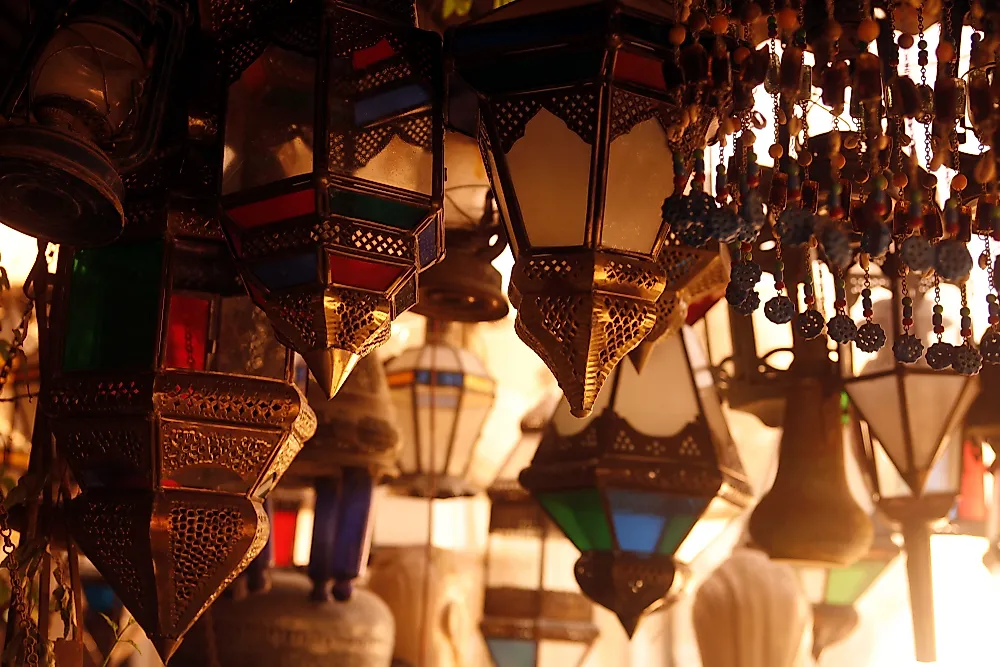The Culture Of Syria

The Western Asian nation of Syria is home to diverse ethnic groups. The country has a long cultural history where family, religion, respect, and self-discipline are considered to be of great significance.
Ethnicity, Language, And Religion
Syria hosts a population of 19,454,263 individuals. Arabs comprise 50% of Syria’s population. Alawite, Kurd, and Levantine account for 15%, 10%, and 10% of the Syrian population, respectively. Arabic is the official language of Syria. Kurdish, Armenian, Aramaic, French, and English are also spoken in the nation. Islam is the official religion of the state. Sunni Muslims account for 74% of the country’s population. 10% of the population is represented by Christians.
Cuisine
Syrian cuisine reflects influences of Greek, Mediterranean, Southwest Asian, Turkish, and French cuisines. Some of the most common dishes of the cuisine are kibbeh (made of bulgur, finely ground meat, minced onions, and spices), hummus, tabbouleh (Levantine vegetarian salad), fattoush (Syrian or Lebanese bread salad), baklava (rich, sweet dessert pastry), sujuk (a spicy sausage), etc. Syrian cheese is well-known. Cookies or biscuits called ka'ak are also prepared and eaten with cheese. Arabic coffee, arak (an alcoholic drink), white coffee, and jallab are some popular Syrian beverages.
Traditional Clothing
Syrian men usually wear a long gown called the “kaftan” while women wear long robes, usually black in color, that covers the entire body. Both men and women wear head wraps. However, most people in Syria wear modern, western-style clothing. Women are expected to dress modestly.
Literature, Art, And Craft
Syria has a rich heritage of literature and the arts. The Syrian writers have contributed significantly to the Arabic literature for centuries. Initially, the literary works focused on romanticism but in the 20th century, social realism dominated Syrian literature. The country also has a long history of oral literature that includes folktales and legends, fairy tales, war stories, and more. A large section of this literature also has been produced in the published form.
Since Islam forbids the pictorial representation of animal and human forms, Syrian art primarily features geometric designs and calligraphy. These works of art can be seen in the palaces and mosques across the country. A number of handicrafts like silver and gold jewelry, mosaic woodworking, fabric production, glassblowing, carpet weaving, etc., are produced in Syria.
Performance Arts
For centuries, Syria served as one of the Arab world’s centers for classical Arab music. The muwashshah music developed in the Syrian capital city of Aleppo and was used to accompany Andalusian poetry. The folk music of Syria used the oud (a stringed instrument), the flute, and lap-held drums. Bedouin music is popular in desert regions. Today, youth in urban areas have also taken great interest in European music. Syria also has an age-old history of church music. The Christian hymnody originated in the country.
The Dabkeh, a folk dance involving circle and line dancing is popular in Syria. It is often performed on occasions like weddings. Another dance called the Arāḍa involves the use of swords.
Syria also has a long tradition of storytelling. There are many coffee shops in the country where tea is served and a professional storyteller recites an ongoing saga.
Sports
Football, swimming, tennis, and basketball are the most popular sports in Syria. In the past, Syria paid host to several international sporting events like the Pan Arab Games and the Mediterranean Games. The national football team of the nation has achieved some success by qualifying for four Asian Cup events. Football is played both professionally and informally throughout the country.
Life In Syrian Society
Syrian society is predominantly a patriarchal society. Here, women are often treated as inferior to men and are always kept under the custody of a male relative, father, husband, or son. Although women work in the crop fields in rural areas, most Syrian women in urban areas do not work outside their homes. Only 1% of the employed women hold managerial or administrative positions.
Marriages in Syria are usually arranged by the couple’s family. It is extremely rare for couples to marry without their family’s wishes. Polygamous marriages do occur but the law states that a man can only marry more than once when he can financially support his multiple wives.
Syrian households are usually large with more than two generations living in the same house. The eldest male of the family, usually the father or the grandfather, has the highest authority. For women, the family provides the only social outlet as they are usually not allowed to leave the home alone. Inheritance is patrilineal with the oldest son inheriting the estate from the father in most cases. Kinship ties are strong in Syrian society.
Children are highly valued in Syria. They are regarded as gifts of God and the more the children a person has, the more fortunate he/she is considered. Education is provided to both boys and girls but more boys complete their education than girls.
Men and women usually socialize separately in Syrian social gatherings. Long conversations are considered a favorite pastime. People usually stand close and speak loudly. Greetings are often elaborate in nature and involve questions about the health and well-being of the family. Syrians are regarded as affectionate people. Hugging and kissing between members of the same sex are common. Public display of affection between members of the opposite sex is, however, discouraged.











